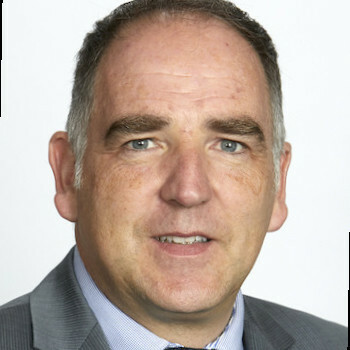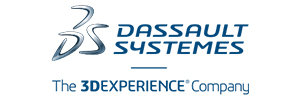
Stephan Arndt
Authored by Stephan ARNDT, Worldwide Senior Industry Process Consultant, GEOVIA, Dassault Systèmes
Change is a constant, of course, but in mining, more than perhaps ever before, we are seeing a new landscape where it's no longer acceptable to look at everything through the lens of profit. Society demands a safe and sustainable mining sector and, quite rightly, companies are zeroing in on carbon reduction, green steel production and alternative fuel sources. To be successful though, they will need to reengineer the fundamentals of operations, infrastructure and how they recruit and make best use of people.
Be wary of the digital magnet
It perhaps doesn't help that everywhere you look across sectors, people appear specifically to be magnetically attracted to digital transformation and believe, in the words of entrepreneur and venture capitalist Marc Andreessen, that "software is eating the world". There's an obvious temptation to digitise physical activities but industries are not created equal and mining has more than its fair share of challenges here.
Digital transformation projects often fail. They either don't deliver business value, have a limited lifespan, are linked to individual champions and too often they only deliver new, reactive systems that eliminate a pain point at a given moment. But those systems are frequently not integrated with critical systems and they become problematic to maintain and deliver in the long term .
Majors will often have an IT ‘transformation' programme running for several years and end up being disillusioned; traditional software companies sell solutions aligned with industry standards; and often a cycle of fail-and-go-again emerges because thinking hasn't been joined up. We need to think about business and operational transformation, related to the business as a whole and not point solutions that create new silos. In the words of a mining executive: "The industry does not have a digital transformation problem, the industry has a digital transformation deployment problem."
Key to this issue is a disconnect between business goals and digital transformational activities: is there a framework that helps? In transformation, we're using the benefit dependency network, first proposed by the Cranfield School of Business Management, to visualise cause-and-effect relationships. This network helps to map the ‘why do we want to change' axis to the ‘how do we change the business process' and acts as a platform for more detail-oriented work later.
Addressing change challenges
The old wisdom encapsulates the conundrum well: change is tough, not changing is worse. Many of us have a human tendency to be suspicious of the new and to hark back to known processes and thinking. But there are also structural challenges here. A lot of successful innovation and business process change isn't replicated or scaled up because it is brought down by ‘big bang' phenomena such as mergers and acquisitions taking precedence or creating the need for further change processes.
Another common issue is file format incompatibility: vendors often have proprietary formats that lock in clients. The Open Mining Format, designed to facilitate data exchange using open-source code, is not being taken up as widely as it might. So, we see silos emerge such as a fleet management system not talking to mine planning systems.
But on the positive side, cloud solutions are gaining ground and can act as a fast-forward button for smaller companies that aren't tied up as much by legacy systems and stand to gain the benefits of a system that is inherently collaborative.
The human factor
And then we come to people, which really is a serious problem in the industry. My advice to employers here is, first, make workers happy because you're in a battle to find and retain people. Second, ditch short-termism: forget about next month and think about the next years. Third, abandon your addiction to ‘linear thinking' and instead look over the fence. Ask yourself what skills might contribute in the future and what are new ways to hire and inspire people.
The funnel bringing people into our sector is hugely challenging. Universities struggle because of inertia and the specific mandates they are given, but there are positive signs in emerging partnerships that bridge miners and academia. Think for example, about the relationship formed between BHP and the University of Newcastle, Australia for low-carbon steel production with funding from BHP's US$400m Climate Investment Program. That will last five years and help train the next generation of PhD researchers and engineers. Or look at Rio Tinto working with the University of Nottingham in the UK on low-carbon steel production. By forging new partnerships we have the chance to come up with more creative thinking than by staying within our own camps and echo chambers.
Also, micro-credentials, apprenticeships and flexible career options will help the industry get around the traditional model of studying for four years before earning real money. Startup events and hackathons can build buzz and we need to get more people learning on the job rather than creating chasms between learning and doing. We also need to look after people who have already committed so we need to look at areas like flexibility when people are raising families and be more supportive to welcome them back into the sector.
Fresh thinking
More generally, we need to fight back against the notion that this is a polluting industry rather than an empowering realm that enables so much progress in the world. We work in an environment that is being rapidly transformed by renewables and sustainable models; there is so much scope for innovation and a chance to change the world.
But technology needs to step up here too. CIOs and CTOs in the mining sector can't tolerate the piecemeal systems that are all too common where an engineer is dragged into various IT systems to harness the relevant data for analysis.
As with any complex challenge, viewing this all via the lenses of people, process and technology will help us to map the future. Mining has so much to offer but long-term, sustainable, holistic change needs urgent attention.
ABOUT THIS COMPANY
Dassault Systèmes
Dassault Systèmes, the 3DEXPERIENCE Company, is a catalyst for human progress. We provide business and people with collaborative 3D virtual environments to imagine sustainable innovations. By creating virtual twin experiences of the real world with our 3DEXPERIENCE platform and applications, our customers push the boundaries of innovation, learning and production. Dassault Systèmes brings value to more than 290,000 customers of all sizes, in all industries, in more than 140 countries. For more information, visit www.3ds.com


























